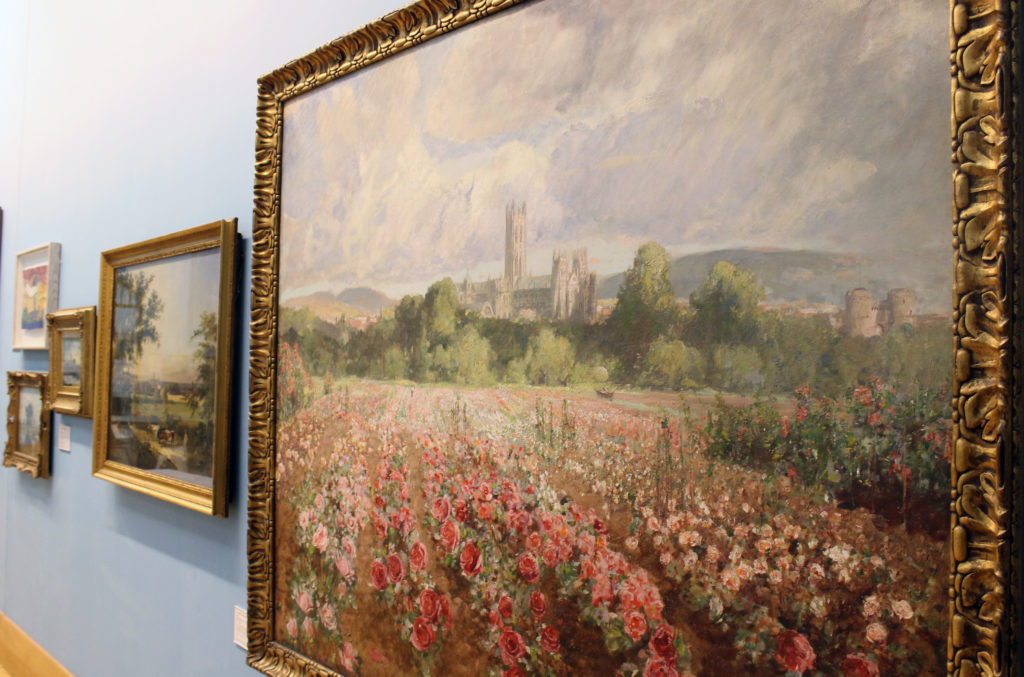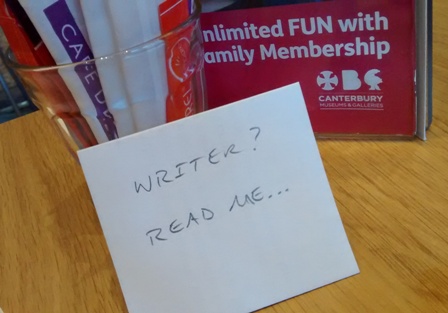
Easter fun at the museums!
Exhibitions, trails and activities; six fun things for all the family to enjoy at The Beaney and...
It’s nearly the end of my armchair residency at The Beaney. I’ve spent the past four months dipping in and out, sometimes on official duty with orange-ribboned lanyard, more often under the radar, snatching moments between other commitments. I’ve pressed my face against glass, knelt in obeisance before curious objects, contorted myself to meet varying eye-levels. With all this peering and prying, I do know the collection more intimately, but the contents remain out of reach. It’s not just that I can’t touch these items, handle them, turn them about or pocket them for later. It’s that they are and will continue to be enigmatic, refusing to yield up their secrets.
That’s okay. My job here is to fill in the blanks. It’s the prerogative of the writer to imagine histories, to patch together scraps and flesh-out skeletal facts. I’ve done this with items in the collection during my residency: it’s what I expected to do. I’ve responded to objects, imagined their makers, their back-stories and their subsequent travels. I’ve tried on their voices. All of this was intentional and part of the brief: what I hadn’t foreseen was how much this process, and documenting it, would become an end in itself.
I’ve used the Beaney collection with creative writing students for several years, and plundered it for inspiration many times. I knew there would be material here for poems and fictions. But what I’ve gradually discovered over the past weeks is that ways of looking and interpreting are just as important as the fruits of creating. And with this realisation, I’ve started to cut myself some slack. I thought I would come away from this residency with notebooks full of poetry, maybe some micro fiction, and a few leads to follow up later. There’s some of that: a handful of polished pieces that I’m happy with, and a lot of scribbled observations. More evident is my increased awareness of process. I’ve taken the time to look, really look, and think. Dedicated, creative thinking time is rare. Coming into the Beaney has staked out a space for thought.
All this thinking, analysis and unraveling has manifested itself in my residency blogs. I’m used to writing about ideas in academic papers, and I’m used to trying them out in creative work, but until now I’ve not really explored ways of joining them up in creative non-fiction. It’s like thinking out loud. For someone constantly using and choosing their words, it’s almost a kind of therapy.
Doing enables sharing, of course, and stepping back from how I approach interrogating and interpreting objects allows me to articulate this to others. I’ve condensed some of this thinking into a few simple writing exercises.
On this particular Sunday morning visit, I’ve infiltrated the café and shared my ideas by stealth. I’ve printed out various prompts – ideas for hardened writers, story seeds for visiting families – and sneaked them between the sugar bowls. And because writers are inherently nosy, I wait and watch for responses. Few can resist unfolding the little paper tents. Some look, frown and pass on. Others read the prompts aloud to each other over coffee. I notice one lone visitor actually following the instruction take me with you. What happens next? I don’t resort to stalking. Not knowing is part of the fun.

After a little persuasion, a gallery assistant agrees to leave extra copies of the prompts in the Explorers & Collectors room. Maybe you will find one there.
In the spirit of ongoing sharing, I include a couple of ideas here. One is designed specifically for writers willing to get stuck in, notebook in hand. The other is aimed at families: a series of questions that might lead to some on-the-hoof animal storytelling. Note to selves: all levels of engagement are equally valid.
Points of view
Find a figure that appeals to you: a person or creature in a picture a photograph, illustration, carving, decoration, sculpture, taxidermy…
Animal stories
Find an animal in the collection that interests you. This can be a real animal or one in a picture or carving.
Make up a story for the animal. What would it be like having this animal for a pet?
You could try telling a story in the animal’s voice. Think of its life before it came here, or imagine what it might do when The Beaney closes and nobody’s looking…
So, what has this Beaney residency done for me? It has given me much-needed time out, a pause to reflect on and refresh my writing practice. It has enabled me to write in a different way, and think about how to pursue this kind of writing further. Best of all, it has reminded me that creativity is just as much about the process as the product.
